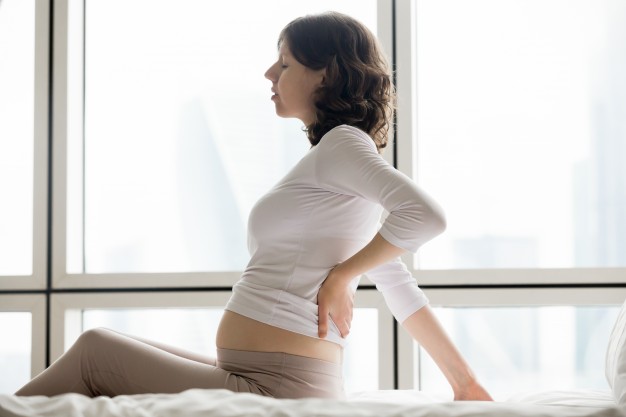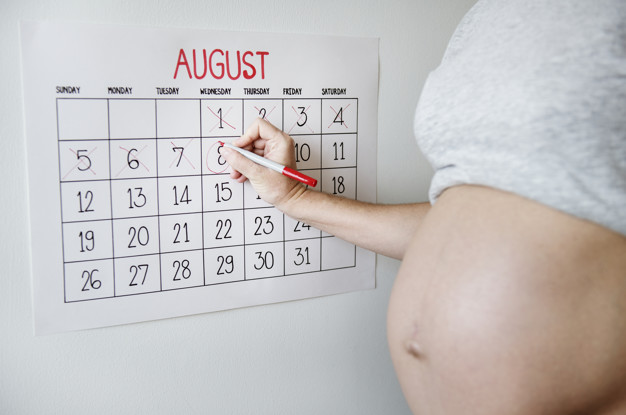Endometriosis
Definition:
When endometrial glands and stroma occur outside of the uterine cavity, usually located in the pelvis.

Endometriosis can arise in the ovaries (cysts may form), bowel, diaphragm the fallopian tubes, and in the anterior abdominal wall in a surgical incision.
It is often painful.
Endometriosis also can be deep located in rectum, colon, bladder, ureter, uterine ligaments and vagina.
The causes of Endometriosis is not well known but some theories indicate that it could be:
1. Genetic.
2. Retrograde menstruation: when menstrual blood containing endometrial cells flows back through the fallopian tubes instead of going outside of the body.
3. Immune system problems.
4. Imbalanced cell proliferation and apoptosis.
5. Surgery such as a hysterectomy or C-section.
Risk factors:
1. Nulliparity
2. Early menstruation (before age 11 to 13)
3. Late menopause
4. Menstrual cycles ≤27 days
5. Heavy menstrual bleeding
6. Height greater than 172 cm
7. Low body mass index
8. High consumption of trans unsaturated fat
9. Severe physical or sexual abuse
10. Caucasian and Asian origins
While lactation, omega 3 consumption and multiple births can reduce the risk of Endometriosis.
Symptoms:
It could be with no symptoms, but if symptomatic:
1. Pelvic Pain
2. Low back pain
3. Infertility
4. Ovarian cysts
5. Bowel and bladder dysfunction.
6. Dysmenorrhea: pain begins 1 – 2 days before menstrual period, continues during menstrual time, and can continue for several days after
7. Pain with intercourse
8. Abnormal uterine bleeding
9. Fatigue
Diagnosis:
1. Abdominal Laparoscopy , to recognize the location and size, and sometimes tissue sample is taken (biopsy) for further testing.
2. Imaging seen with transvaginal ultrasound might help in case of cysts.
Treatment:
Medical options:
1. Nonsteroidal anti-inflammatory drugs (NSAIDs) to treat pain.
2. Estrogen-progestin contraceptives (oral pills, vaginal ring, patch): to relieve pain.
Holds some side effects such as nausea, breast tenderness, headaches, and unscheduled bleeding.
Contraindications:
a. Age greater than 35 and smoking. (more than 15 cigarettes a day)
b. Complicated valvular heart diseases
c. History of CVA
d. High blood pressure
e. Migraine with aura
f. History of blood clots
g. Current or history of breast cancer
h. Less than 6 week postpartum
i. Cirrhosis
j. Liver Adenoma or hepatoma
k. Nephropathy
3. Progestin-only therapy, to treat endometriosis-related pain.
It can be taken in different forms:
– 150 mg intramuscular injection every 3 months or 104 mg subcutaneous injection every 3 months.
– Dienogest 2 mg oral pill daily.
– Norethindrone acetate 5 mg orally daily.
– Etonogestrel implant.
Side effects of progestin treatment: Spotting, amenorrhea, mood changes, weight gain, bone loss in case of long-term use.
4. GnRH analogues:
– Leuprolide: 3.75 mg intramuscular injection given monthly, or 11.25 mg intramuscular injection given every 3 months.
– Nafarelin: 200 mcg given twice daily.
5. Antagonist analogues:
– Elagolix: 150 mg oral tablet once daily or 200 mg twice daily.
6. Aromatase inhibitors: for sever Endometriosis related pain, often used in combination with progestin.
Possible side effects: bone loss and ovarian cyst development in case of prolonged use.
– oral anastrozole: 1 mg once daily.
– oral letrozole 2.5 mg once daily.
7. Danazol: Side effects: acne, muscle cramps, weight gain, spotting, hair growth, and voice deepening.
Possible complications of Endometriosis:
1. Infertility.
2. May increase the risk of preterm birth, preeclampsia, cesarean delivery, miscarriage, ectopic pregnancy, placenta previa or postpartum hemorrhage.
3. Low risk of some ovarian cancers, less than 2%.
4. Possibility of atherosclerosis and cardiovascular diseases.



